Aix-en-Provence is a cultural gem in southern France, known for its Baroque charm and rich history. This city offers a unique blend of markets, architecture, and culinary delights. However, first-time visitors often fall into common tourist traps that can hinder their experience.
To truly immerse yourself in the Provençal lifestyle, it’s essential to avoid these pitfalls. From navigating seasonal crowds to understanding local etiquette, planning ahead can make all the difference. Emilie Joly Johnson, a local expert, emphasizes the importance of respecting cultural norms to enhance your trip.
The city’s 138 fountains, many with Roman origins, add to its historical allure. Aix-en-Provence is also a UNESCO Creative City of Gastronomy, highlighting its culinary significance. By steering clear of common mistakes, you can fully appreciate the region’s Baroque charm and authentic Provençal life.
For more insights on exploring Aix-en-Provence, check out this guide.
Don’t Skip the Local Markets
Exploring the local markets is an essential part of experiencing the vibrant culture of this French city. With seven weekly markets, each offering unique treasures, they are the heart of daily life. From fresh produce to handmade crafts, these places are a feast for the senses.
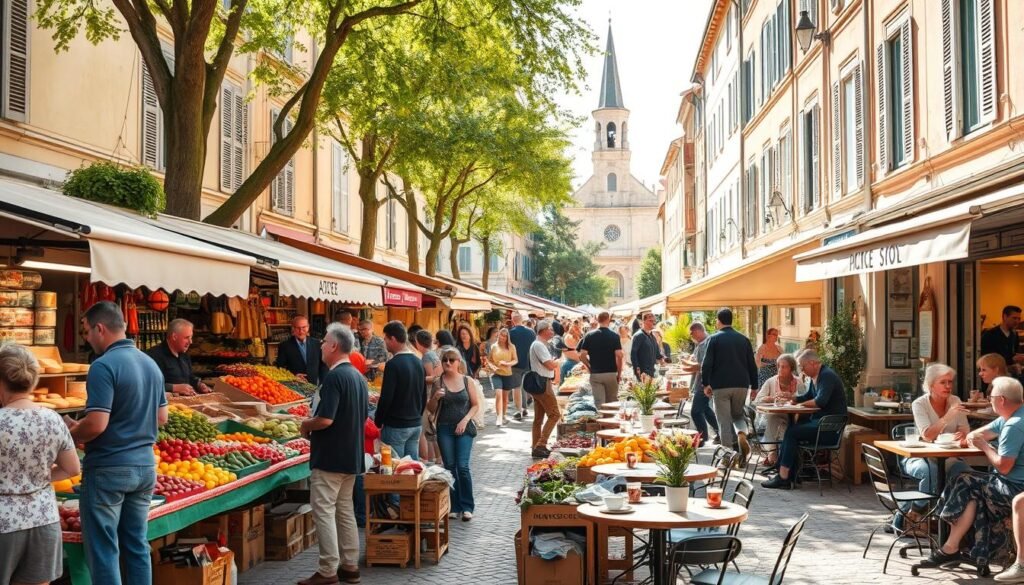
Why the Markets Are a Must-See
Square Richelme is the center of morning activity, where locals meticulously inspect fresh produce. The afternoon brings a different vibe, with flower stalls and antique finds. Seasonal specialties like melon d’eau and lavender honey add to the charm.
Common Mistakes at the Markets
One common mistake is buying calissons from non-specialists. For authentic treats, visit Parli or Brémond. Another tip is to greet vendors with “Bonjour” before starting your conversation. Timing is also key—visit between 8-10am for the freshest picks and avoid the midday closures.
| Market | Location | Best Time | Highlights |
|---|---|---|---|
| Square Richelme | City Center | Morning | Fresh produce, seasonal specialties |
| Place des Prêcheurs | City Center | Evening | Local producers, handmade crafts |
Don’t miss the hidden gem of the evening marché des producteurs at Place des Prêcheurs. It’s a perfect way to end your day with local flavors and a warm atmosphere.
Avoid Overlooking the Fountains
The fountains of Aix-en-Provence are more than just decorative; they tell stories of the city’s past. With 138 fountains scattered across its streets, each one holds a piece of history. From Roman thermal springs to Baroque artistry, these water features are a cornerstone of the city’s charm.
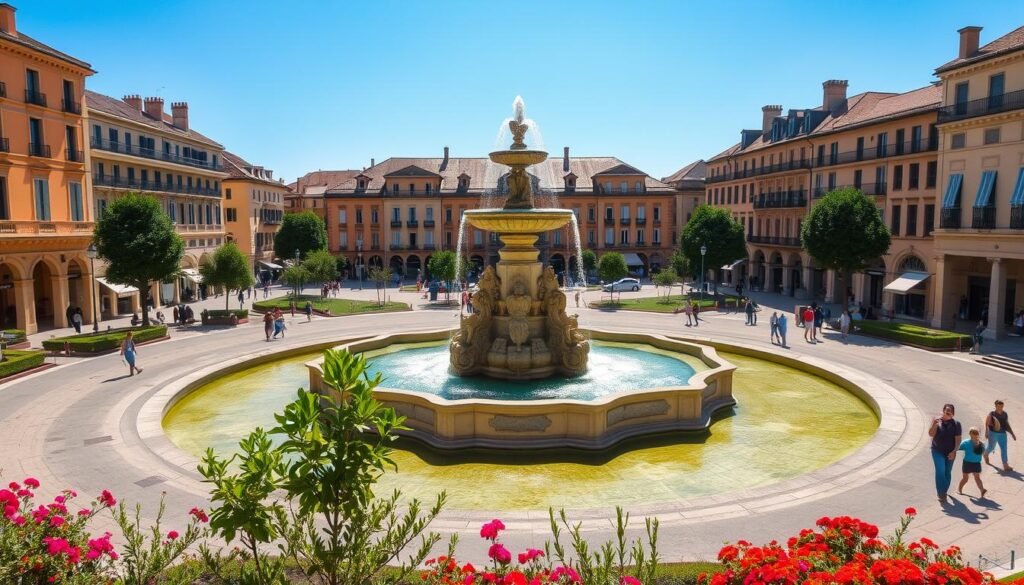
The Significance of Aix’s Fountains
Many fountains trace their origins to the Roman era, when Aquae Sextiae’s thermal springs were first developed. Sextius Calvinus, the city’s founder, left a legacy that still flows through these structures. The Fontaine de la Rotonde, for example, symbolizes Justice, Agriculture, and Fine Arts, reflecting the city’s values.
Hidden gems like the moss-covered fountains in Vieil Aix date back to the 17th century. These quieter spots offer a glimpse into the city’s architectural evolution. The Fontaine des Quatre Dauphins, with its playful dolphin sculptures, is another must-see, steeped in local legend.
How to Appreciate Them Properly
To truly understand these fountains, consider a guided walking tour. The Tourist Office offers themed routes that highlight their history and artistry. Don’t just snap photos—take time to read the plaques and learn their stories.
Evening illuminations at the Place d’Albertas fountain add a magical touch. Locals also share a charming tradition: tossing coins into the Fontaine des Quatre Dauphins for good luck. These small acts of appreciation make the experience richer.
Don’t Rush Through Cours Mirabeau
Cours Mirabeau is a timeless boulevard that captures the essence of Aix’s elegance. Once a 17th-century carriage route, it has transformed into a vibrant social hub. The plane trees, planted in 1830, stretch for a mile, offering shade and a serene atmosphere.
The History Behind the Boulevard
Originally designed as an aristocratic promenade, Cours Mirabeau became the heart of Aix’s café culture. Historic spots like Les Deux Garçons, frequented by Cézanne and Zola, still stand today. The boulevard’s architecture, including the Hôtel d’Esparron de Villevert, reflects its rich past.
Best Ways to Enjoy Cours Mirabeau
Start your day with a morning coffee at Le Grillon, soaking in the quiet charm of the streets. For a relaxed evening, enjoy an apéro at La Mado. Seasonal events, like the Christmas market and Bastille Day parade, add to the boulevard’s allure.
Pair your stroll with a visit to Musée Granet, just a 5-minute walk away. This combination offers a perfect blend of history, art, and leisure. Take your time to appreciate the details—Cours Mirabeau is more than just a street; it’s an experience.
Don’t Miss Out on Cezanne’s Legacy
Paul Cézanne’s influence is deeply woven into the fabric of this city, making his legacy a must-see for art enthusiasts. His works capture the essence of the region, blending nature and creativity in a way that continues to inspire.

Key Sites Related to Cezanne
Start your journey at Atelier Cézanne, his preserved studio. Here, you’ll find the tools and environment where he created some of his most famous works. The studio offers stunning views of Mont Sainte-Victoire, a frequent subject in his art.
Another highlight is Jas de Bouffan, the Cézanne family estate. Nineteen surviving murals provide a glimpse into his early artistic development. For a broader perspective, visit the Granet Museum, which houses the “Cézanne à Giacometti” collection.
Why His Art Matters in Aix
Cézanne’s art is a celebration of the region’s landscapes and light. The Mistral winds, which shaped his color palette, add a unique dimension to his works. His ability to capture the essence of Provence has left a lasting impact on the art world.
To fully appreciate his legacy, follow the Cézanne Trail. Brass “C” studs mark the path from his birthplace to his final resting place. For a deeper dive, join the guided “In Cézanne’s Footsteps” tour, available from April to October.
- Visit Terrain des Peintres park for panoramic viewpoints that inspired his paintings.
- Pick up a free Cézanne Pocket Guide from the Tourist Office for detailed insights.
Avoid Eating Only at Tourist Spots
Exploring the culinary scene in this southern French city is a journey into authentic flavors and traditions. While it’s tempting to dine at popular spots near landmarks, venturing off the beaten path reveals the true essence of the region’s food culture.
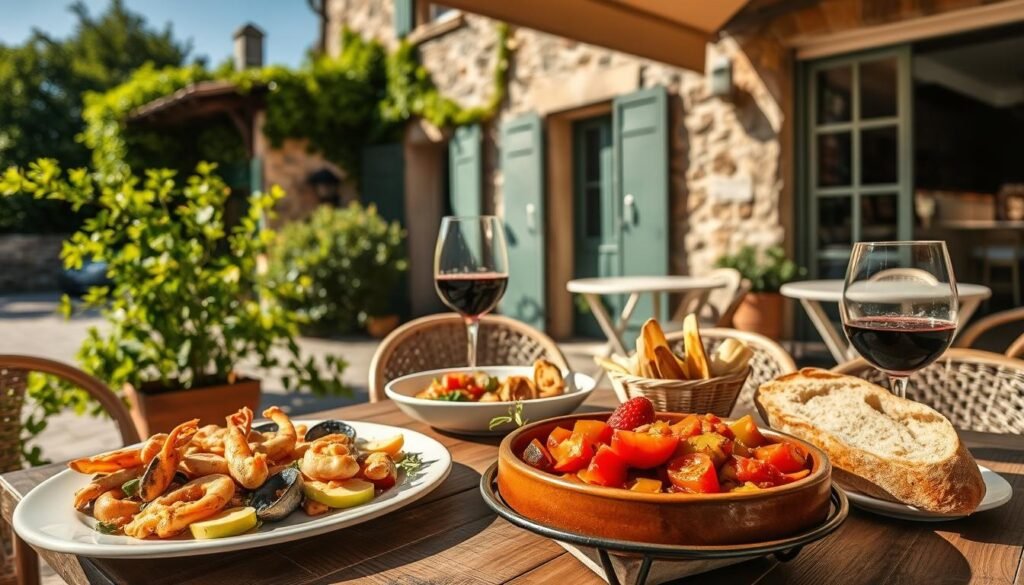
How to Find Authentic Local Cuisine
To experience the best of local life, avoid restaurants with English-only menus, especially near the Rotonde. Instead, seek out hidden gems like Chez Féraud, known for its ratatouille, or Le Formal, a haven for truffle lovers. Emilie Joly Johnson recommends La Méduse, a charming wine bar, and L’Incontournable, a fountain-side eatery.
For a market-to-table experience, visit Le Petit Verdot. Here, fresh ingredients from local markets are transformed into delicious meals. Cooking classes at La Cuisine de Clémentine also offer a hands-on way to bring the flavors of South France into your home.
Popular Dishes to Try
The local cuisine is rich with traditional dishes that reflect the region’s heritage. Start with soupe au pistou, a hearty vegetable soup with basil pesto. Aïoli garni, a garlic-infused mayonnaise served with vegetables and fish, is another must-try.
Don’t miss bouillabaisse, a Provençal fish stew served in two courses. For dessert, savor calisson d’Aix, a sweet almond treat protected by the 1991 Appellation d’Origine Contrôlée. These dishes offer a true taste of the area’s culinary life.
- Identify tourist traps: Restaurants with English-only menus near Rotonde.
- Recommend authentic spots: Chez Féraud (ratatouille), Le Formal (truffles).
- Detail market-to-table dining at Le Petit Verdot.
- Explain proper bouillabaisse etiquette (served in two courses).
- Suggest cooking classes at La Cuisine de Clémentine.
For more tips on dining in this region, check out this guide.
Don’t Ignore the Architecture
Walking through the streets, you’ll find a blend of styles that tell the story of centuries past. The city’s architecture is a visual journey through history, showcasing influences from Baroque to Neoclassical. Each building holds a unique story, waiting to be discovered.
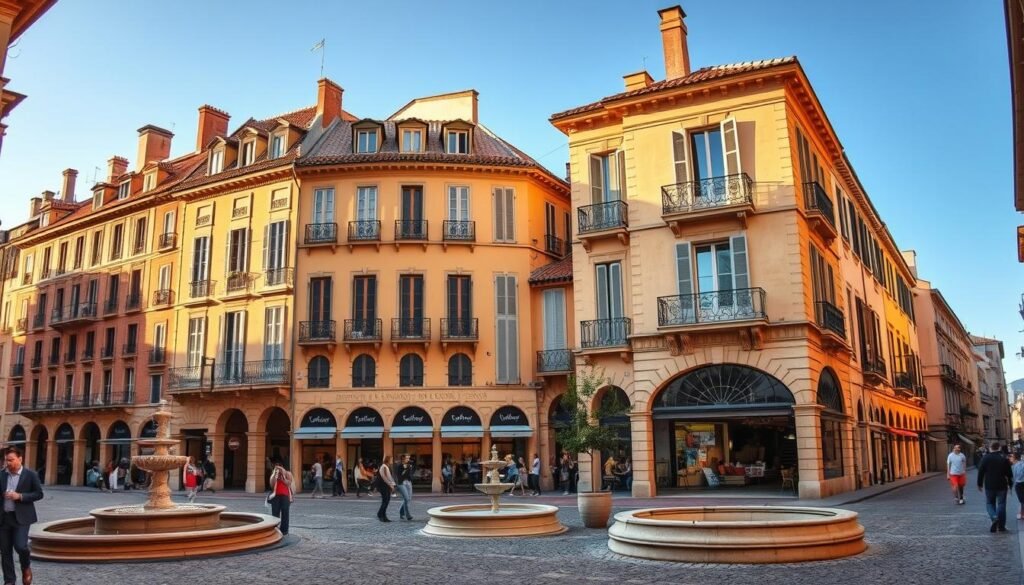
Notable Buildings and Their Stories
Hôtel de Caumont is a must-see, with its restored 18th-century interiors. This elegant house offers a glimpse into the luxurious lifestyle of the past. Another highlight is Pavillon Vendôme, known for its French formal gardens and serene atmosphere.
In the Mazarin District, you’ll find hôtels particuliers with Italian influences. These grand houses feature hidden courtyards, like the one at Hôtel d’Estienne de Saint-Jean. Don’t miss the intricate rooftop details, such as phoenixes and sundials, which add charm to the skyline.
Architectural Styles to Look For
The city’s architecture is a mix of styles. The Cathédrale Saint-Sauveur is a prime example of Baroque design, with its ornate details and grand scale. The Palais de Justice showcases Neoclassical elements, while the Allées Provençales reflect Haussmannian influences.
Decode the architectural elements as you explore. Look for trompe-l’œil paintings, intricate ferronnerie (ironwork), and the distinctive pierre de Bibémus stone. These details reveal the craftsmanship of the past.
- Visit Fondation Vasarely on Saturdays for free tours of its optical-art structure.
- Explore hidden courtyards for a quieter, more intimate experience.
- Take time to appreciate rooftop details, often overlooked but full of character.
Don’t Forget to Plan for the Weather
Understanding the climate is essential for making the most of your visit. With an average of 300 sunny days annually, the region offers plenty of opportunities for exploration. However, the Mistral winds, which occur over 40 days per year, can bring sudden changes. Layered clothing is a must to stay comfortable.
Best Times to Visit
Emilie Joly Johnson, a local expert, suggests avoiding the July and August crowds. Instead, target May or September for milder weather and fewer tourists. April is perfect for cherry blossoms, while October offers stunning vineyard views. These months provide ideal conditions for day trips and outdoor activities.
How to Dress Appropriately
Pack a Provençal wardrobe with linen layers and sturdy walking shoes. The Mistral winds can be chilly, even in summer, so a light jacket is handy. For rainy days, plan indoor activities like visiting Marseille’s MuCEM. On sunny days, explore Les Baux-de-Provence or enjoy the region’s festivals.
| Month | Weather | Festivals |
|---|---|---|
| April | Cherry blossoms, mild | None |
| June | Warm, sunny | Fête de la Musique |
| September | Cool, vineyards | Calisson Blessing |
For detailed temperature insights, check out this guide. Remember, many shops close from 12:30-3pm in summer due to siesta culture. Plan your day accordingly to make the most of your time.
Make the Most of Your Aix-en-Provence Experience
Slow travel allows you to truly connect with the heart of this vibrant region. Instead of rushing through Cours Mirabeau, take time to savor its charm. Skip crowded tourist spots and discover hidden gems for authentic local life.
Consider renting a bastide villa for a more immersive stay. These traditional homes offer a cozy retreat and a chance to live like a local. Pair your trip with a visit to the Luberon villages, just a 30-minute drive away, for a broader taste of South France.
Maximize your experience with the Aix City Pass from the Tourist Office. It provides discounts on attractions, making it easier to explore the region. As Paul Cézanne once said, “The world doesn’t understand me… but I understand Aix.” Let his words inspire your journey.

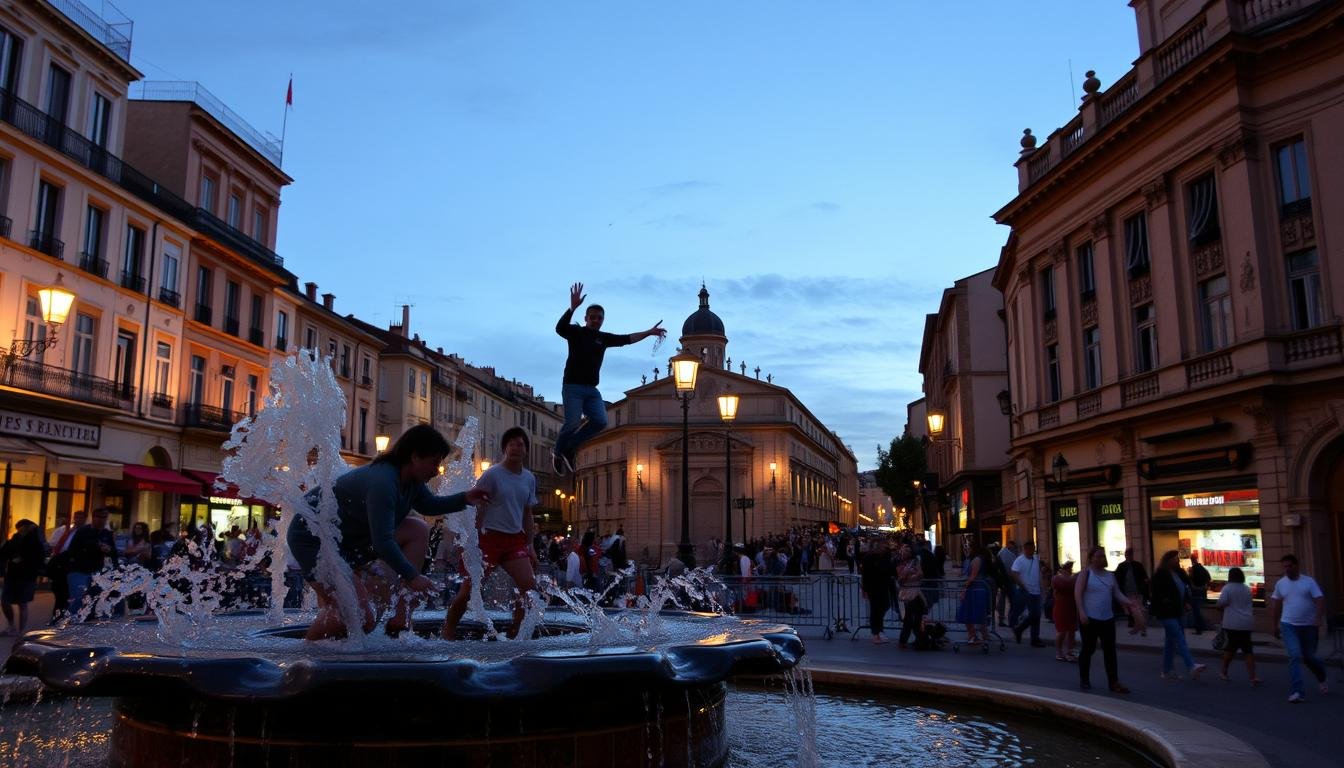









Leave a Reply